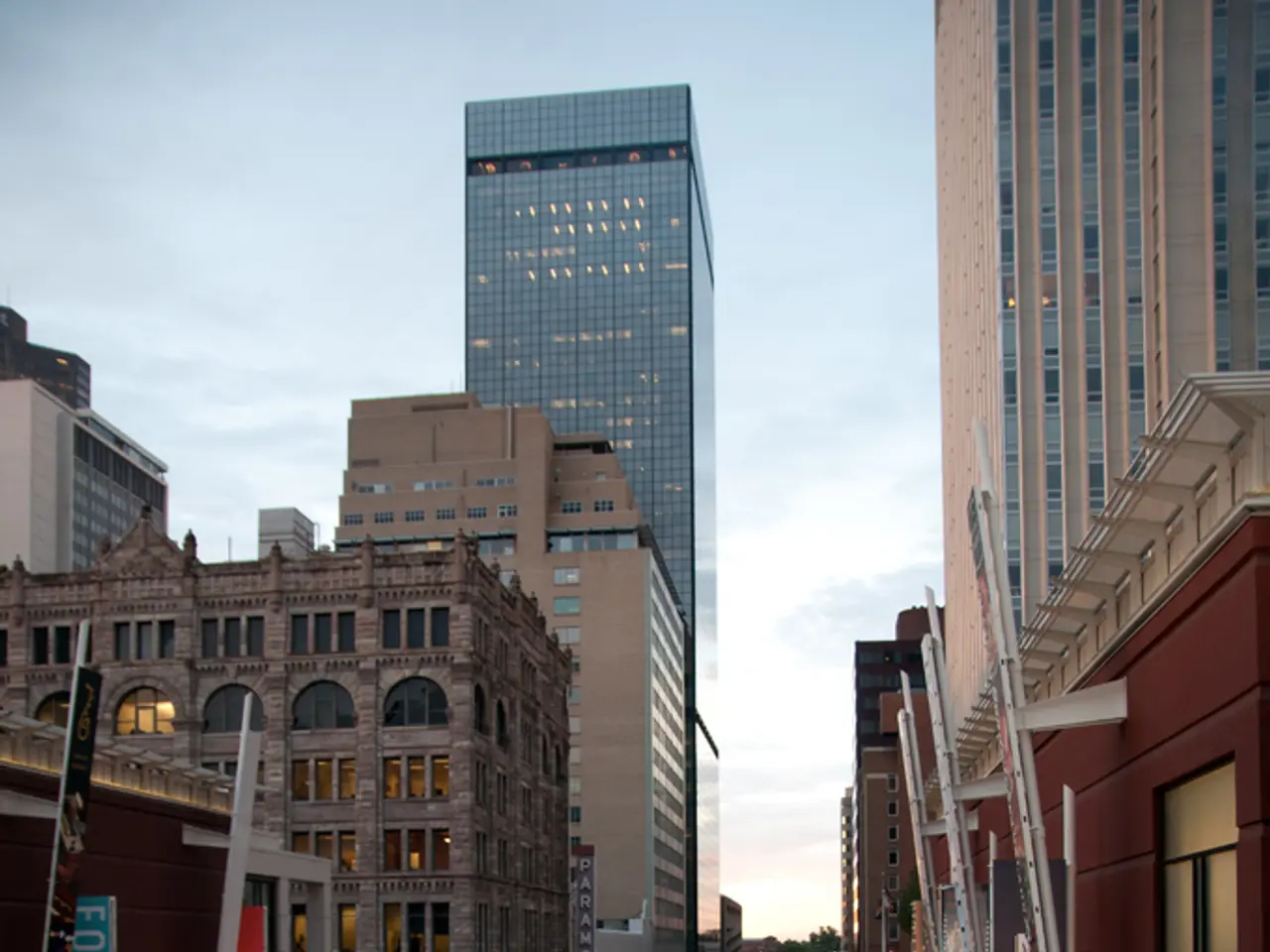Los Angeles experiences demolition by the hands of Hollywood
In the rich tapestry of cinema history, Los Angeles has frequently been portrayed as a site of cataclysmic destruction. From natural disasters to alien invasions, the City of Angels has been a popular setting for films depicting various calamities.
The city's cinematic journey began in 1781, but its portrayal in disaster films dates back to the 1950s. One of the earliest examples is "The War of the Worlds" (1953), which showed Los Angeles devastated by an alien invasion. This theme continued with films like "Earthquake" (1974), a disaster epic that dramatized a catastrophic earthquake that destroyed most of Los Angeles, and "Blade Runner" (1982), a dystopian vision of a dark, polluted city under acid rain.
The subgenre of films depicting the destruction of Los Angeles has been so recurrent that the UCLA Film & Television Archive curated a category called "Los Angeles Destroys Itself" for the Los Angeles Film Festival. This theme is so prevalent that critics note the city itself often plays the role of a "victim" in disaster cinema, contributing to a "guilty pleasure" among audiences.
In "Escape from L.A." (1996), John Carpenter presents a satirical, post-apocalyptic view of future Los Angeles. Similarly, "This Is the End" (2013) combines comedy with apocalyptic disaster, while "Volcano" (1997) features volcanic eruptions destroying parts of the city. Other alien invasion movies like "Independence Day" (1996), "Battle: Los Angeles" (2011), and "Skyline" (2010) also depict widespread destruction of Los Angeles due to extraterrestrial attacks.
In "Skyline," a couple becomes trapped at a Marina del Rey penthouse during an alien attack, while in "Miracle Mile" (1988), the intersection of Fairfax Avenue and Wilshire Boulevard becomes the center of a riot filled with terrified residents. These films use a variety of techniques, from detailed miniatures and models to advanced CGI, to visualize Los Angeles’ destruction.
The popularity of these films could be driven by schadenfreude, envy of California's wealth, or a fascination with spectacle. Some argue that Hollywood may be processing its own anxieties about change by depicting the destruction of Los Angeles. Paul Malcolm, senior public programmer at the UCLA Film & Television Archive, suggests this could be the case.
In a fictional scenario, the future president of the United States predicts that Los Angeles will be destroyed by an earthquake as divine retribution. However, the city continues to stand strong, its resilience evident in the face of adversity. Despite the numerous depictions of its destruction, Los Angeles remains a reliable draw for movie audiences, offering a signature showcase for the industry's visual effects artists.
References:
[1] Thompson, Anne. "The Destruction of Los Angeles in Film." The New York Times, The New York Times, 23 June 2011, www.nytimes.com/2011/06/26/movies/the-destruction-of-los-angeles-in-film.html.
[2] Biskind, Peter. "The End of the World as We Know It." Vanity Fair, Vanity Fair, 25 June 2013, www.vanityfair.com/hollywood/2013/06/los-angeles-hollywood-disaster-movies.
[3] Vaughan, Michael. "The History of Disaster Movies." The Hollywood Reporter, The Hollywood Reporter, 24 May 2012, www.hollywoodreporter.com/news/history-disaster-movies-283891.
- The theme of Hollywood movies portraying the destruction of Los Angeles has been so prevalent that it warrants a specific category, "Los Angeles Destroys Itself," in the UCLA Film & Television Archive.
- From "The War of the Worlds" (1953) to more recent films like "Battle: Los Angeles" (2011) and "Skyline" (2010), Los Angeles has been a common setting for movies depicting catastrophic disaster.
- In "Independence Day" (1996), the city is decimated by extraterrestrial attacks, mirroring the popular subgenre of disaster movies set in California.
- Critics suggest that the city itself often plays the role of a "victim" in disaster cinema, contributing to a "guilty pleasure" among audiences who embrace these films due to either schadenfreude, envy, or a fascination with spectacle.
- In "Miracle Mile" (1988), the intersection of Fairfax Avenue and Wilshire Boulevard becomes the epicenter of chaos, reflecting the city's culture and urban landscapes.
- Despite numerous depictions of its destruction, Los Angeles remains a reliable draw for movie audiences, offering a signature showcase for the industry's visual effects artists.
- According to Paul Malcolm, senior public programmer at the UCLA Film & Television Archive, the recurring theme of Los Angeles' destruction in films could be an expression of Hollywood's anxieties about the city's changing climate or culture.





